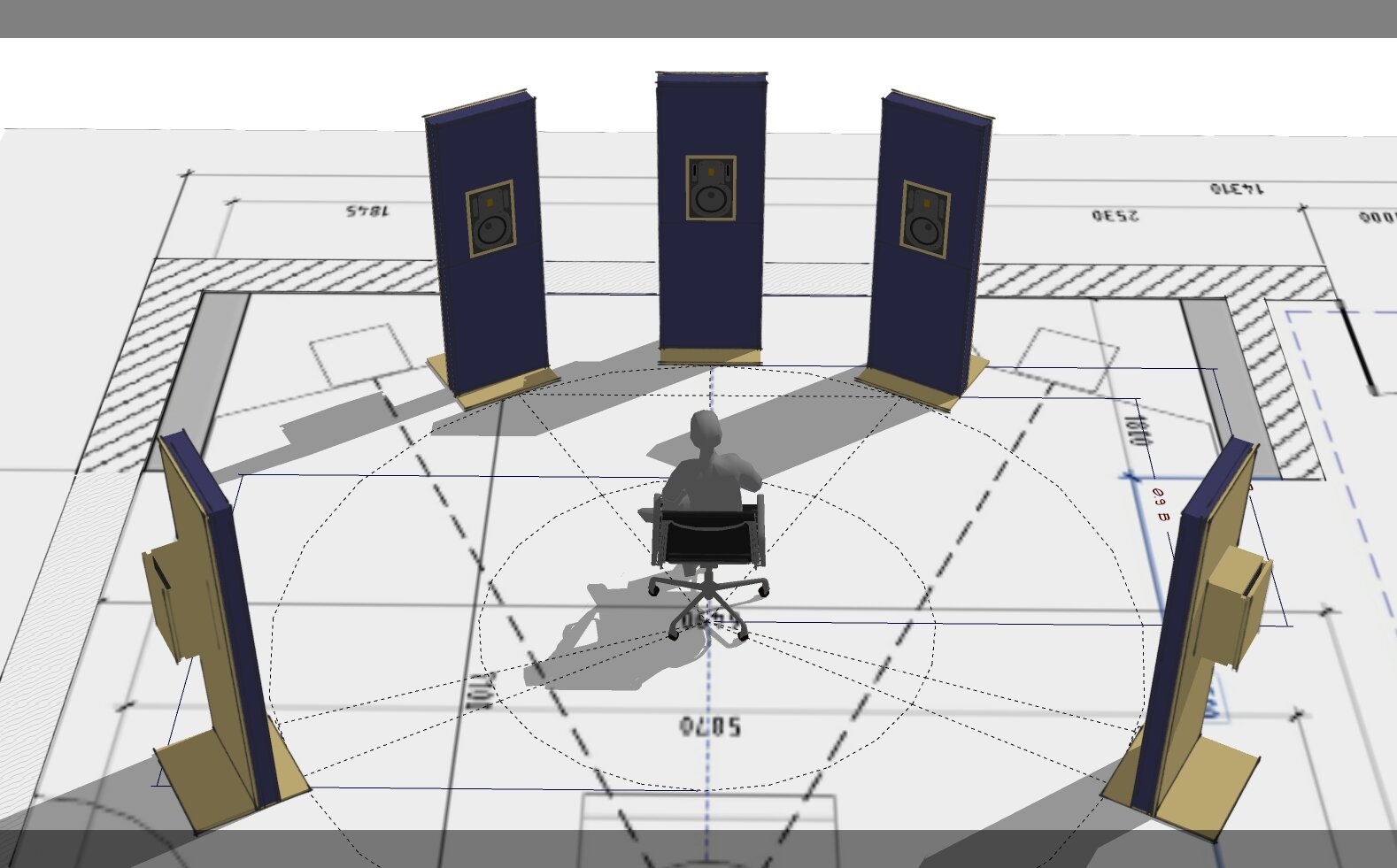-
Posts
2,297 -
Joined
-
Last visited
Everything posted by Glenn Stanton
-
and you downloaded the latest LABS app / Spitfire manager? when you contact Spitfire support - did they give you any suggestions?
- 22 replies
-
- spitfire
- spitfire audio
-
(and 1 more)
Tagged with:
-
a simpler solution is use anti-spam filters & rules - new users need to wait 8 hours before posting or read the "rules before posting" sticky and click "like" etc would likely prevent a lot of spamming.
-

What the F*** do People Do With the Power Supplies???!!!!
Glenn Stanton replied to Byron Dickens's topic in Gear
if they're wall warts, you're likely better off replacing them with a properly made power supply which has the correct ground, chassis ground etc. to reduce/prevent hum and provide stable voltage (although in some cases, a variable supply option can be useful to "stress" the electronics to get some additional bandwidth on the effects or some additional smoothing to the saturation. -

Can Reaper song project file be brought into Cakewalk
Glenn Stanton replied to treesha's topic in Cakewalk by BandLab
remember to do a MIDI export as well to capture tempo (if any) changes etc -

MIDI Devices under the Preferences menu question
Glenn Stanton replied to timboalogo's topic in Cakewalk by BandLab
as long as they're on and active when you start CW, you should see the same list each time. i know for me (like just now) if i forget to turn on my Komplete Kontrol S49, it's missing from my list ? if i exit CW, turn on my S49, open CW, it's all good again. -

Dimension - NOT Dimension Pro
Glenn Stanton replied to Steve Moddelmog's topic in Cakewalk by BandLab
+1 -- a means of viewing detailed project information esp on plugins... not necessarily all the settings (very nice to have though) but at least the plugin and patch name, or for CW plugins, the settings as well ? generally speaking when i make enough changes to a preset or from scratch, i save it as a preset of it's own - either for generic re-use, or if project specific - then a project "abbreviation" added to its name and/or saved to the project folder if its an option. -

Issue with multi processing and thread sync
Glenn Stanton replied to Henrizzle's topic in Cakewalk by BandLab
actually the latest version is 2.66 ? -

How to assign Cakewalk to use all the CPU cores
Glenn Stanton replied to George D's topic in Cakewalk by BandLab
you could use Waves Studio Rack to create parallel also... but sometimes having the plugins serialized is the end goal... then again, when you have 16 cores and 11 are used at any one time -- is that a problem? ? -

A new discovery with exporting large projects
Glenn Stanton replied to Max Arwood's topic in Cakewalk by BandLab
not sure the difference between the H/W vs buss. but congrats! i'm a big fan of the export dialog. the options for tracks, stems, and in my case, i have "PRINT" buss which taps off the master pre-fader so i can adjust the master level (monitoring) and not impact the final buss output. then i set up tasks to export tracks or WAV rough mix (if record template), or WAV and/or MP3 2-track files (if mix template). -

Questions recording in 32-bit float
Glenn Stanton replied to RexRed's topic in Instruments & Effects
i used to set up a dedicated Melodyne folder on my project drive for all separations -- but it looks like it changed in the not too distant past as i was checking the settings and found i could not change it! this is annoying since my documents folder is on my OneDrive which means if i forget to pause it, it will be conflicting with the synchronization functions. so i'll also need to exclude my cache folder from the AV as well. then found in the help file: Please note: The location of the audio cache is predetermined and cannot be altered: Windows: C:\Users\USERNAME\Documents\Celemony\Separations. macOS: /Users/USERNAME/Library/Caches/com.celemony.Melodyne/Separations -

The Art of MIDI Orchestration, by Jerry Gerber
Glenn Stanton replied to Jerry Gerber's topic in Production Techniques
thanks for this! do you have a HW controller device to manage adjusting the CC or using a mouse? or some combination? in my mind, have a MIDI controller with a number of knobs set to CC # would make initial changes "easier" and then zoom in and adjust for more detail. -

The Art of MIDI Orchestration, by Jerry Gerber
Glenn Stanton replied to Jerry Gerber's topic in Production Techniques
i liked it. one consideration - maybe also speak to how some of the instruments have articulations (and/or key switches) which may assist in the creation of more realistic / fuller performances (trills, legatos, staccatos, slides, etc etc) (i noted in your event list in the article: Virtual Orchestra Composition and Production by Guest Author Jerry Gerber (soundbytesmag.net) https://soundbytesmag.net/virtualorchestracompositionandproductionwithjerrygerber/ -- you had patch changes / notes about the articulations ? ) -

Questions recording in 32-bit float
Glenn Stanton replied to RexRed's topic in Instruments & Effects
there are some references floating around but it's easier just to see the file types it supports via the standalone app: the ARA code doesn't seem to care about the audio depth as it's just coordinating the process - Melodyne itself uses the transfer and separation folders to store individual snippets (one good idea is to periodically it clean up). -

Permanently delete Realtek ASIO Audio HD
Glenn Stanton replied to Michael Richards's topic in Cakewalk by BandLab
fair enough - the proper HW is going to be better for sure. ? for me, the times i use "low latency" for live recording (vocals, guitars, etc) -- the 6ms RTL is fine. ? 20 seconds to align any skewed tracks and done ? -

Permanently delete Realtek ASIO Audio HD
Glenn Stanton replied to Michael Richards's topic in Cakewalk by BandLab
that's because they're called "UMC Driver" ? basically in their downloads, lower units clearly show ASIO4ALL as the driver, and all the bigger units they call the UMC drivers. i can go as low as 8 samples (0.5ms) on my 202HD unit but typically don't go lower than 64 samples which is about 1.5ms each way so about 6ms total round trip. and only use it when recording live stuff. otherwise for mixing and virtual instruments, i just keep it at 2048 samples (about 100ms round trip). -

Permanently delete Realtek ASIO Audio HD
Glenn Stanton replied to Michael Richards's topic in Cakewalk by BandLab
nope, it's definitely not ASIO4ALL. ? its a real ASIO driver which works most excellently. -

Permanently delete Realtek ASIO Audio HD
Glenn Stanton replied to Michael Richards's topic in Cakewalk by BandLab
@RexRed @Starship Krupa the lower end units use the ASIO4ALL, the HD and larger units have real ASIO drivers - one of the reasons i picked the UMC202HD - it uses the same ASIO driver as my larger UMC1820 unit. as a note: i have ASIO4ALL installed but don't use it EXCEPT for a couple of older VST synths via Tone2 where is seems to work the best of all drivers. no idea why, but it just does. so it's hanging around solely for that. otherwise everything else is either the default system drivers or disabled ? -

How to Pitch a Clip and have it stay in time with the project tempo?
Glenn Stanton replied to sadicus's question in Q&A
when groove clipping it, you need to be sure to set the number of beats in the clip to get it to be the size you want. -

Permanently delete Realtek ASIO Audio HD
Glenn Stanton replied to Michael Richards's topic in Cakewalk by BandLab
so your saying that the disabled driver got re-enabled? i just leave my devices alone except for the realtek. and just use my Behringer ASIO drivers. -

Permanently delete Realtek ASIO Audio HD
Glenn Stanton replied to Michael Richards's topic in Cakewalk by BandLab
you need to disable the driver in device manager, not uninstall as windows will see the hardware and load the last known driver. if you disable, it will remain disabled (unless some update reactivate it) and it won't keep reappearing. same for the realtek etc any drivers except ASIO (which can be uninstalled usually, if not, disable it). -

Cakewalk free plugins need reactivating
Glenn Stanton replied to Gregory Tatum's topic in Instruments & Effects
that's rude! it's called "yoga mixing". try to stay current with all the cool trends or face being left behind! ?



